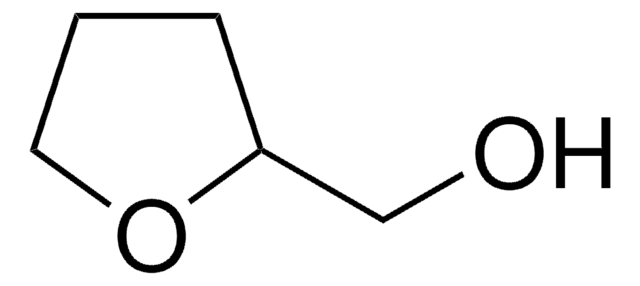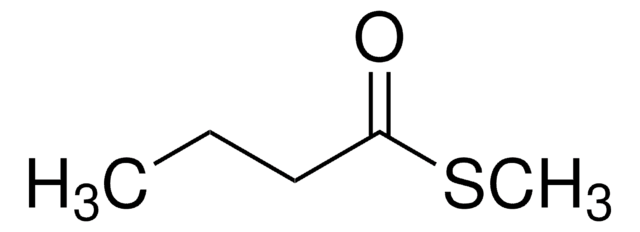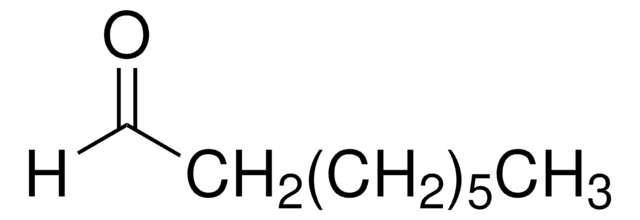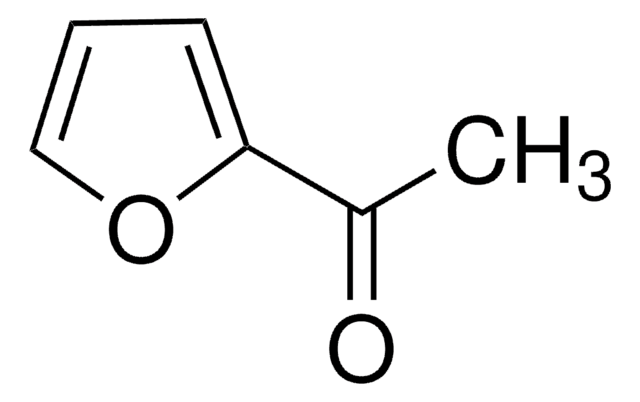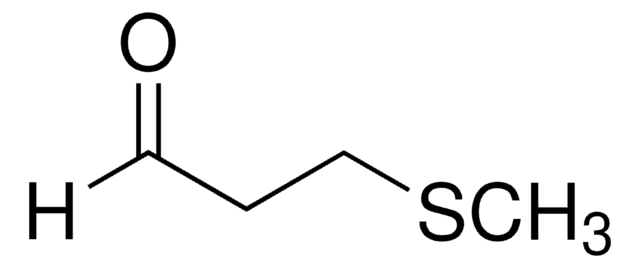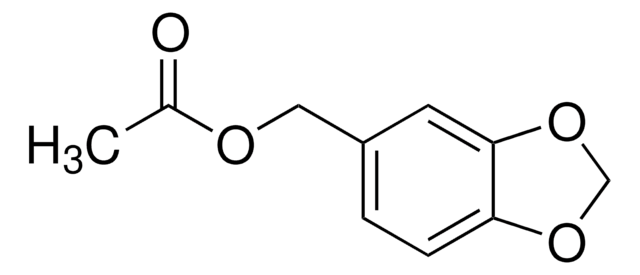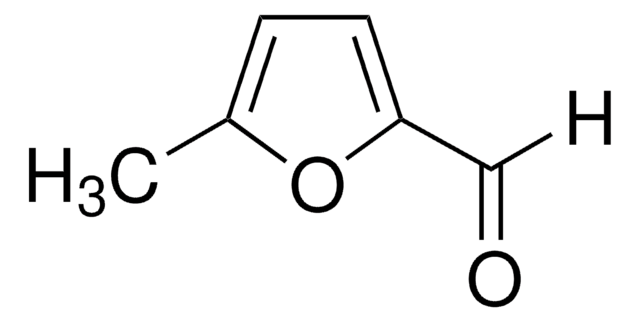W305618
Tetrahydrofurfuryl alcohol
≥98%
Synonym(s):
NSC 15434, Tetrahydro-2-furanmethanol
About This Item
Recommended Products
biological source
synthetic
Quality Level
grade
Kosher
reg. compliance
FDA 21 CFR 117
vapor density
3.52 (vs air)
vapor pressure
2.3 mmHg ( 39 °C)
Assay
≥98%
expl. lim.
9.7 %
refractive index
n20/D 1.452 (lit.)
bp
178 °C (lit.)
mp
−80 °C (lit.)
density
1.054 g/mL at 25 °C (lit.)
application(s)
flavors and fragrances
Documentation
see Safety & Documentation for available documents
food allergen
no known allergens
Organoleptic
vegetable
SMILES string
OCC1CCCO1
InChI
1S/C5H10O2/c6-4-5-2-1-3-7-5/h5-6H,1-4H2
InChI key
BSYVTEYKTMYBMK-UHFFFAOYSA-N
Looking for similar products? Visit Product Comparison Guide
Related Categories
General description
Application
- Electrochemical oxidation of tetrahydrofurfuryl alcohol on boron-doped diamond anode: Influence of current density and electrolyte solution.: Research into the electrochemical pathways of tetrahydrofurfuryl alcohol offers insights into its potential for energy storage applications, focusing on how varying electrical and solvent conditions affect its oxidation rates (Xiong Y et al., 2023).
- Polar-Functionalized Polyethylenes Enabled by Palladium-Catalyzed Copolymerization of Ethylene and Butadiene/Bio-Based Alcohol-Derived Monomers.: This paper presents a novel approach to the synthesis of functionalized polymers using tetrahydrofurfuryl alcohol derivatives, which could revolutionize materials science with new, sustainable polymer blends (Jian Z et al., 2023).
Disclaimer
Signal Word
Danger
Hazard Statements
Precautionary Statements
Hazard Classifications
Eye Irrit. 2 - Repr. 1B
Storage Class Code
6.1C - Combustible, acute toxic Cat.3 / toxic compounds or compounds which causing chronic effects
WGK
WGK 2
Flash Point(F)
167.0 °F - closed cup
Flash Point(C)
75 °C - closed cup
Personal Protective Equipment
Regulatory Listings
Regulatory Listings are mainly provided for chemical products. Only limited information can be provided here for non-chemical products. No entry means none of the components are listed. It is the user’s obligation to ensure the safe and legal use of the product.
EU REACH Annex XVII (Restriction List)
Certificates of Analysis (COA)
Search for Certificates of Analysis (COA) by entering the products Lot/Batch Number. Lot and Batch Numbers can be found on a product’s label following the words ‘Lot’ or ‘Batch’.
Already Own This Product?
Find documentation for the products that you have recently purchased in the Document Library.
Our team of scientists has experience in all areas of research including Life Science, Material Science, Chemical Synthesis, Chromatography, Analytical and many others.
Contact Technical Service